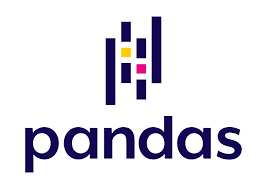
The ABSOLUTE ESSENTIALS of Splitting Data for Machine Learning
(Explanation + Scikit-learn Implementation)
🧵 Long Thread 👇👇
#MachineLearning #DataScience
(Explanation + Scikit-learn Implementation)
🧵 Long Thread 👇👇
#MachineLearning #DataScience

📜Introduction
Why do we need to split our data?
After training the model, you want to test its performance on new data before putting it in production. In other words, you want to measure the generalization error (how well does the model generalize to new data?).
Why do we need to split our data?
After training the model, you want to test its performance on new data before putting it in production. In other words, you want to measure the generalization error (how well does the model generalize to new data?).
The data is commonly split into 3 different sets:
1. Training Set
2. Development Set (Holdout Validation Set)
3. Test Set
1. Training Set
2. Development Set (Holdout Validation Set)
3. Test Set
1⃣ Training Set
- The part of the data that is used to fit (train) the model.
- The quality and quantity of the training data will have a remarkable impact on the performance of the model.
- The part of the data that is used to fit (train) the model.
- The quality and quantity of the training data will have a remarkable impact on the performance of the model.
2⃣ Development Set (Holdout Validation Set)
- The part of the data that is used to provide an unbiased evaluation of the performance of several candidate models.
- I know this sounds a bit vague, but this will become clearer after the following explanation. 👇👇
- The part of the data that is used to provide an unbiased evaluation of the performance of several candidate models.
- I know this sounds a bit vague, but this will become clearer after the following explanation. 👇👇
What is the purpose of the development set?
- When you start a machine learning project, it is really difficult to guess which model will have the best performance, or what are the optimal values for the hyperparameters (learning rate, number of layers, etc.)
- When you start a machine learning project, it is really difficult to guess which model will have the best performance, or what are the optimal values for the hyperparameters (learning rate, number of layers, etc.)
One approach is to train multiple candidate models with different architectures, and with different values for each hyperparameter.
Then you can test the performance of each of the candidate models on the test set, and choose the model with the best performance for deployment.
Then you can test the performance of each of the candidate models on the test set, and choose the model with the best performance for deployment.
However, the above approach is flawed. Why?
The problem is that you have measured the generalization error multiple times on the test set, and you have adopted the model and hyperparameters to produce the best performance for that particular set (Biased Evaluation).
The problem is that you have measured the generalization error multiple times on the test set, and you have adopted the model and hyperparameters to produce the best performance for that particular set (Biased Evaluation).
The solution is to create a separate set, called the development set, on which you can tune your hyperparameters and test the performance of the candidate models.
Then you choose the model with the best performance on that set as the final model.
Then you choose the model with the best performance on that set as the final model.
3⃣ Test Set
- The part of the data that is used to provide an unbiased evaluation of the final model's performance.
- The part of the data that is used to provide an unbiased evaluation of the final model's performance.
📜The Size of each Set
🔴Traditional Machine Learning Algorithms
- You usually have a relatively low quantity of data (maybe 100,000 training instances).
Training Set: 60%
Development Set: 20%
Test Set: 20%
🔴Traditional Machine Learning Algorithms
- You usually have a relatively low quantity of data (maybe 100,000 training instances).
Training Set: 60%
Development Set: 20%
Test Set: 20%
🔴 Deep Learning
- You usually have a huge quantity of data (maybe millions of training instances)
Training Set: 98%
Development Set: 1%
Test Set: 1%
- You usually have a huge quantity of data (maybe millions of training instances)
Training Set: 98%
Development Set: 1%
Test Set: 1%
📜Code Implementation
Assume we have a dataset called "input_data" and we are training a model named "model".😁
🔴The First Approach
Step 1
import scikit-learn's train_test_split function
continue 👇👇
Assume we have a dataset called "input_data" and we are training a model named "model".😁
🔴The First Approach
Step 1
import scikit-learn's train_test_split function
continue 👇👇

Step 2
Split the input data into two sets:
training_set: 60% of the total data
dev_test_set (dev_set + test_set): 40% of the total data
Step 3
Split the dev_test_set into two equal halves:
dev_set: 20% of the total data
test_set: 20% of the total data
Split the input data into two sets:
training_set: 60% of the total data
dev_test_set (dev_set + test_set): 40% of the total data
Step 3
Split the dev_test_set into two equal halves:
dev_set: 20% of the total data
test_set: 20% of the total data
Then you can train multiple models on the training_set, and evaluate their performances on the dev_set.
Finally, choose the best candidate model and evaluate it one more time on the test_set.
Finally, choose the best candidate model and evaluate it one more time on the test_set.
🔴 The Second approach (Cross Validation)
Step 1
Import scikit-learn's train_test_split and corss_val_score functions.
Step 2
Split the input data into only two parts:
training_set: 80%
test_set: 20%
continue 👇👇
Step 1
Import scikit-learn's train_test_split and corss_val_score functions.
Step 2
Split the input data into only two parts:
training_set: 80%
test_set: 20%
continue 👇👇

Step 3
Use the cross_val_score function to train and evaluate the candidate models on the same run.
- By setting the number of cross validations to 5 (cv = 5), the function will split the training_set into 5 equal parts, lets say A, B, C, D, E.
Use the cross_val_score function to train and evaluate the candidate models on the same run.
- By setting the number of cross validations to 5 (cv = 5), the function will split the training_set into 5 equal parts, lets say A, B, C, D, E.
- Then it will train the model on four parts, say A, B, C, D.
Next, it will test its accuracy (scoring = 'accuracy') on the fifth part E, and return the score.
- This will be repeated 5 times (cv = 5), with the model being trained on 4 parts and test on a different 5th part.
Next, it will test its accuracy (scoring = 'accuracy') on the fifth part E, and return the score.
- This will be repeated 5 times (cv = 5), with the model being trained on 4 parts and test on a different 5th part.
Eventually, the function will return 5 different scores, one score per each cross validations.
You can measure the mean and the standard deviation of the 5 scores, which will give you a better estimation of the model's performance on the development set.
You can measure the mean and the standard deviation of the 5 scores, which will give you a better estimation of the model's performance on the development set.
You can finally choose the candidate model with the best performance, and test it one more time on the test set before deployment.
Note
These were the basics of data splitting for machine learning, and there are other variations for specific use cases (will be discussed later).
Note
These were the basics of data splitting for machine learning, and there are other variations for specific use cases (will be discussed later).
That's it for this thread.
If you found it useful, kindly consider supporting my content by retweeting the first tweet, and for more content about #MachineLearning and #DataScience, follow me @ammaryh92 .
If you found it useful, kindly consider supporting my content by retweeting the first tweet, and for more content about #MachineLearning and #DataScience, follow me @ammaryh92 .
• • •
Missing some Tweet in this thread? You can try to
force a refresh







